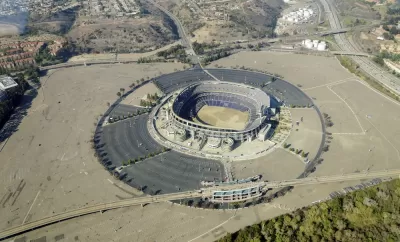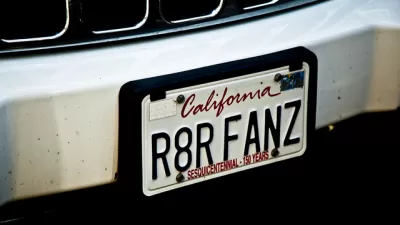The San Diego Chapter of the American Institute of Architecture believes the NFL Chargers’ downtown stadium proposal is full of risk and lost opportunities. AIA - SD opines the existing stadium site is superior both for the fan and the taxpayer.

In an op-ed, the San Diego Chapter of the American Institute of Architects asks San Diegans to look past the glossy images and the media blitz of the NFL Chargers in their effort to secure a new downtown stadium. Earlier in the year, the Chargers ownership rejected a proposal by the City to build them a new $1.2 billion stadium near their existing stadium site. Instead, Chargers’ owner Dean Spanos sought what he believed was a greener pasture in Los Angeles via a joint stadium proposal with the Oakland Raiders on a former landfill in Carson. However, the NFL owners chose a competing proposal by St. Louis Rams owner Stan Kroenke to build a stadium in Inglewood. As a consolation prize, Spanos was given $300 million and the option of becoming a tenant in Kroenke’s new stadium. He has a year to make the decision. Spanos is using the time to push for a new stadium in San Diego's downtown. The Chargers proposal, via ballot initiative, is to build a combination stadium/convention center annex a la Indianapolis’s Lucas Oil Stadium. Public funding will come via a hefty increase to the Transient Occupancy Tax on hotel rooms. Spanos is selling the tax increase as essentially a windfall paid by out-of-towners.
The AIA - SD points out the many costs and unknown risks of the downtown stadium proposal in comparison to building at the existing Mission Valley site. Such costs and risks include the lack of existing road, parking, and transit infrastructure at the new site, the lack of identified funding for such infrastructure, the potential displacement of the current development “renaissance” near the site, the impact of traffic on surrounding communities, the high potential for cost overruns and delays due to environmental and other issues, the lack of sufficient space (15 acres) at the downtown site for a stadium (nevermind a combination stadium/convention center), the convention industry’s preference for expanding the existing convention center rather than building a convention annex attached to a stadium, the potential liability of the city for cost overruns falling outside the scope of Charger's portion of the project, and perhaps most importantly, the existence of a better alternative at the existing Mission Valley stadium site, which eliminates many of these concerns.
To read the op-ed itself, please visit the original article.
FULL STORY: A Football Stadium in East Village? Not so Fast

Alabama: Trump Terminates Settlements for Black Communities Harmed By Raw Sewage
Trump deemed the landmark civil rights agreement “illegal DEI and environmental justice policy.”

Study: Maui’s Plan to Convert Vacation Rentals to Long-Term Housing Could Cause Nearly $1 Billion Economic Loss
The plan would reduce visitor accommodation by 25% resulting in 1,900 jobs lost.

Why Should We Subsidize Public Transportation?
Many public transit agencies face financial stress due to rising costs, declining fare revenue, and declining subsidies. Transit advocates must provide a strong business case for increasing public transit funding.

Paris Bike Boom Leads to Steep Drop in Air Pollution
The French city’s air quality has improved dramatically in the past 20 years, coinciding with a growth in cycling.

Why Housing Costs More to Build in California Than in Texas
Hard costs like labor and materials combined with ‘soft’ costs such as permitting make building in the San Francisco Bay Area almost three times as costly as in Texas cities.

San Diego County Sees a Rise in Urban Coyotes
San Diego County experiences a rise in urban coyotes, as sightings become prevalent throughout its urban neighbourhoods and surrounding areas.
Urban Design for Planners 1: Software Tools
This six-course series explores essential urban design concepts using open source software and equips planners with the tools they need to participate fully in the urban design process.
Planning for Universal Design
Learn the tools for implementing Universal Design in planning regulations.
Smith Gee Studio
Alamo Area Metropolitan Planning Organization
City of Santa Clarita
Institute for Housing and Urban Development Studies (IHS)
City of Grandview
Harvard GSD Executive Education
Toledo-Lucas County Plan Commissions
Salt Lake City
NYU Wagner Graduate School of Public Service





























